#16 April 1785
Text
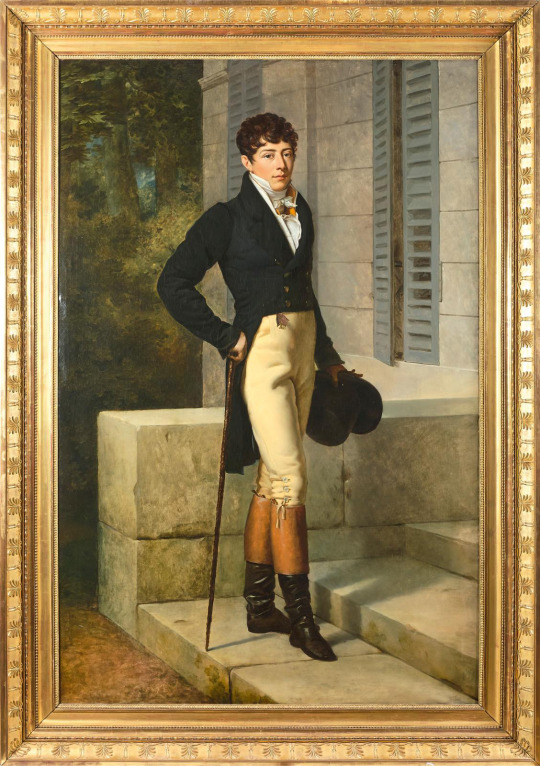
François Gérard (1770-1837), Portrait de Charles Ferdinand Théodore de Vassinhac d'Imécourt, 1808, oil on canvas
Portrait displays a Napoleonic officer who died at the Siege of Danzig (1807) during the War of the 4th Coalition. According to Philippe Dufour, “The male portrait rarely reached such a peak of elegance as under the First Empire”. This portrait sold for €1,472,000 in 2022.
Born on July 16, 1785 in Paris, Ferdinand d'Imécourt was the youngest of three children. Volunteering at the age of twenty in 1805 for the Dutch campaign, Ferdinand d'Imécourt experienced a rapid and promising advancement. In 1807, he was Marshal Lefebvre's orderly and died prematurely on April 13, 1807 during the siege of Danzig. He is buried in the southern part of the cathedral of Oliwa (about 12 km from Danzig), where a Latin stele still stands mentioning him. This was one of the last burials inside a church, since the Napoleonic code in force in the Grand Duchy of Warsaw prohibited this practice. During the siege of Danzig, the cathedral of Oliwa served as a field hospital for the French army. Wounded during a sortie at nine o'clock in the evening, he died at six o'clock in the morning at the age of twenty-one years and nine months.
(Gazette-Drouot) (Drouot)
#François Gérard#Gérard#Drouot#auction#art#paintings#19th century art#neoclassicism#napoleonic era#napoleonic#first french empire#french empire#19th century#painting#male fashion#history#French art#neoclassical#neoclassical art#Portrait de Charles Ferdinand Théodore de Vassinhac d'Imécourt#coalition wars#napoleonic wars#war of the 4th coalition#war of the fourth coalition#napoleon#napoleon bonaparte#Poland#duchy of Warsaw#Danzig
28 notes
·
View notes
Text




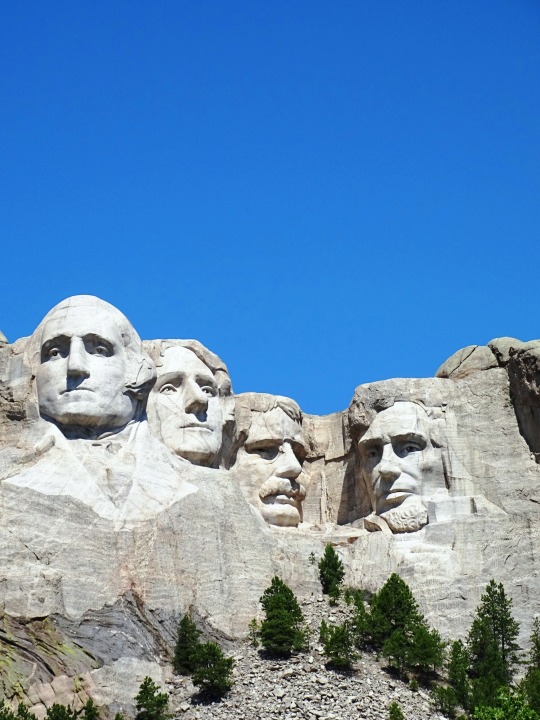







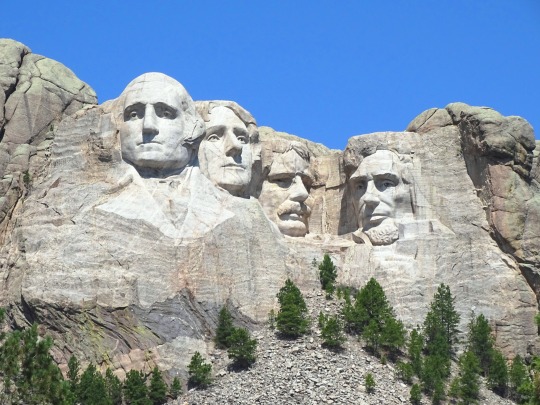
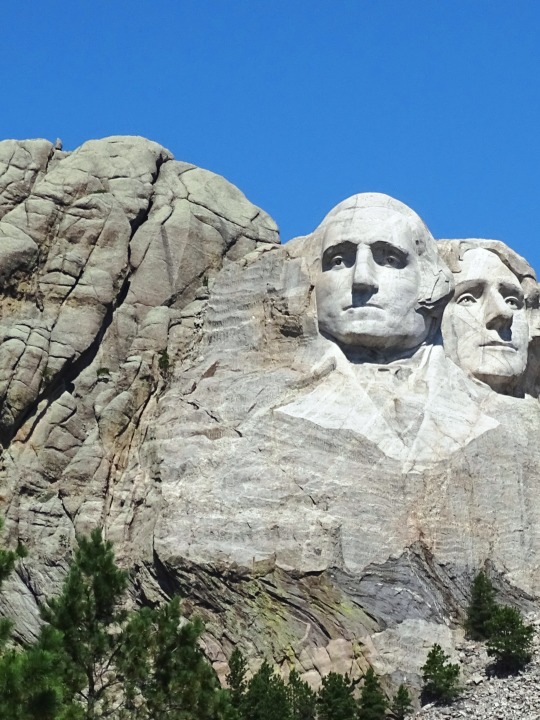
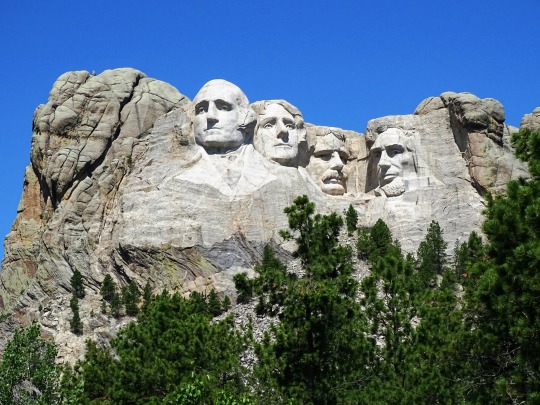
Thomas Jefferson Day
Thomas Jefferson, a founding father of the United States, was born on April 13, 1743. He held many roles and did much during the formative years of the country, including being the main author of the Declaration of Independence and the country’s third president. He wrote his own epitaph, highlighting what he most wanted to be remembered for: “HERE WAS BURIED THOMAS JEFFERSON AUTHOR OF THE DECLARATION OF AMERICAN INDEPENDENCE OF THE STATUTE OF VIRGINIA FOR RELIGIOUS FREEDOM AND FATHER OF THE UNIVERSITY OF VIRGINIA.”
Thomas Jefferson Day is a legal observance, but it is not a public holiday. A joint resolution approved on August 16, 1937, authorized the President of the United States to proclaim April 13 as “Thomas Jefferson’s Birthday” each year. The following year, President Franklin D. Roosevelt issued Presidential Proclamation 2276 to designate the day. Subsequent presidents have made similar proclamations. In Alabama, Thomas Jefferson’s birthday is officially celebrated on Presidents’ Day, along with George Washington’s.
Thomas Jefferson was born at the Shadwell plantation in Albemarle County, Virginia. His mother, Jane Randolph Jefferson, was from a prominent Virginia family, and his father, Peter Jefferson, was a planter and surveyor. After graduating from the College of William and Mary in 1762, he began studying law. As there weren’t official law schools at the time, Jefferson studied under a Virginia attorney. He began his work as a lawyer in 1767.
He married Martha Wayles Skelton on January 1, 1772. They had six children, but only two daughters lived to adulthood. Martha died in 1782 at the age of 33, and Jefferson never remarried. Besides keeping himself busy with politics throughout his life, he had many other interests, including gardening, architecture, music, and reading.
Jefferson was a member of colonial Virginia’s House of Burgesses between 1769 and 1775. He wrote “A Summary View of the Rights of British America” in 1774, which brought him to a wider audience. It said that the British Parliament didn’t have the right to use authority over the colonies. He was then selected to be a delegate to the Second Continental Congress. During this time, a panel of five was chosen to draft the Declaration of Independence. Of the five, which also included John Adams and Benjamin Franklin, Jefferson was chosen to write the draft. It was adopted on July 4, 1776.
In the fall of 1776, Jefferson resigned from the Continental Congress and was elected to the Virginia House of Delegates, which was formerly the House of Burgesses. In the late 1770s, he drafted the Virginia Statute for Religious Freedom. It was a notable forerunner to the First Amendment, and Jefferson thought it was one of his most substantial contributions, being important enough to include in his epitaph. After his time in the Virginia House of Delegates, he was Governor of Virginia from 1779 to 1781.
Following the Revolutionary War, Jefferson was part of Congress, which was known as the Congress of the Confederation at the time. He served from 1783 to 1784, and then became Minister to France in 1785, taking over the position that Benjamin Franklin had held. Because he was overseas, he was not able to attend the Constitutional Convention in 1787.
In the fall of 1789, Thomas Jefferson returned to America and became the first secretary of state. He helped found the Democratic-Republican Party, which opposed Alexander Hamilton’s Federalist Party, a party which wanted a strong central government with strong powers over the economy. Jefferson believed in a federal government with a limited role and believed in strong state and local governments.
He ran for president in 1796 and received the largest amount of votes after John Adams, so he became vice president. He ran against Adams again in 1800, and this time beat him. But his electoral vote count tied that of his running mate, Aaron Burr, and it was up to the House of Representatives to declare Jefferson as president. Because of this, the Twelfth Amendment, which stipulated separate voting for president and vice president, was ratified in 1804.
Jefferson served two terms as president and was in office from 1801 to 1809. During his first term, in 1803, he helped orchestrate the Louisiana Purchase, in which the size of the United States doubled with the purchase of land for $15 million from France. Jefferson sent Meriwether Lewis and William Clark on an expedition, known as the Corps of Discovery, to explore the new land. With this trip, information was gathered about geography, plant and animal life, and American Indian tribes. During his second term, which he secured with over 70% of the popular vote, Jefferson worked to keep the country out of the Napoleonic Wars. He implemented the Embargo of 1807 after merchant ships were getting harassed by France and Britain. It was an unpopular move, though, as it shut down American trade and hurt the economy; it was repealed in 1809. Jefferson did not run for a third term in 1808.
After his presidency, Jefferson retired to his home, Monticello. “Monticello” means “little mountain” in Italian. Indeed the home is located on a small mountain, on the edge of the Shadwell property where Jefferson was born. He had begun clearing the area for a home in 1768. He designed the home and gardens himself, and he continually worked on the house throughout his life. Art and gadgets filled the rooms, and he kept records of everything that went on at the plantation.
During his retirement years, he also helped found the University of Virginia. He helped design both its buildings and its curriculum. He also made sure it wasn’t a religious school and that there wasn’t a religious litmus test in order to attend it.
In 1815, he sold his 6,700 volume personal library to Congress, to replace the books that had been destroyed by the British in the War of 1812, when they burned the Capitol, which housed the Library of Congress at the time. Jefferson’s books became the foundation of what became the Library of Congress’s new library.
Although Jefferson is revered as one of the founding fathers, he is not a man without contradictions and shortcomings. He was a promoter of liberty and wrote “all men are created equal,” but was a slave owner throughout his whole life, during which he owned a total of about 600 slaves. He believed blacks were inferior humans and didn’t think coexistence would be possible if they were free. And although he never remarried after the loss of his beloved wife, Martha, he went on to father more children with one of his slaves, Sally Hemings. Some of the slaves that were in his bloodline were freed after his death, but most of his slaves were sold.
Thomas Jefferson passed away at Monticello at the age of 83, on July 4, 1826, on the 50th anniversary of the adoption of the Declaration of Independence. As if the date of his death wasn’t ironic enough, fellow founding father John Adams died on the same day. Thomas Jefferson died first, but Adams did not know that Jefferson had died, and his last words were “Thomas Jefferson survives.” Jefferson was buried at Monticello. Monticello was sold off following his death to pay debts, but a nonprofit organization acquired it in the twentieth century and it was opened to the public in 1954.
Source
#Thomas Jefferson Day#13 April 1743#anniversary#US history#born#birthday#Mount Rushmore National Memorial#controversial memorial#USA#controversy#Black Hills#South Dakota#Gutzon Borglum#summer 2019#original photography#tourist attraction#landmark#landscape#nature#NationalThomasJeffersonDay#Thomas Jefferson#US President#Teddy Roosevelt#Theodore Roosevelt#Abraham Lincoln#George Washington#North Central Region#Great Plains#travel#vacation
8 notes
·
View notes
Text
From blood suckers, devils and daemons
I have to say that Halloween is not really my thing, I commemorate different things today – but I still could not resist taking a peek into La Fayette’s correspondences in search for some “spooky terms”. Unsurprisingly, there is not too much on this front. La Fayette used words like devil, spirit, horror, blood, etc. often enough, but mostly in different contexts (the men are in a great spirit, the horror of slavery, where the devil is Clinton, etc.) Nonetheless, there are a few interesting passages to be found that might fit the season
The Marquis de La Fayette to Henry Laurens, ca. January 5, 1778:
Remember, my dear Sir, what Lord North promised to your most cruel and tyrannic ennemys, when he foresaw in one of his speeches that dissensions should take place one day or another amongh the several States, the several members of Congress, and facilitate in the succès and vengeance of a master who is now as thirsty of your blood as he was before of your liberties and properties.
Idzerda Stanley J. et al., editors, Lafayette in the Age of the American Revolution: Selected Letters and Papers, 1776–1790, Volume 1, December 7, Cornell University Press, 1977, p. 213.
The Marquis de La Fayette to the Chevalier de La Luzerne, June 16, 1781:
After having slipped rather fortunately between the enemy army and our stores, we made a junction with a few riflemen. Lord Cornwallis seemed not to like these hilly terrains and withdrew toward Richmond. We make it seem we are pursuing him, and my riflemen, their faces smeared with charcoal, make the woods resound with their yells; I have made them an army of devils and have given them plenary absolution.
Idzerda Stanley J. et al., editors, Lafayette in the Age of the American Revolution: Selected Letters and Papers, 1776–1790, Volume 4, April 1, 1781–December 23, 1781, Cornell University Press, 1981, p. 186.
The Marquis de La Fayette to the L’Abbé Fayon, April 13, 1778:
I am so possessed by the daemon of war that I have totally abandoned myself to military occupations.
Idzerda Stanley J. et al., editors, Lafayette in the Age of the American Revolution: Selected Letters and Papers, 1776–1790, 1778; Volume 2, April 10, 1778–March 20, Cornell University Press, 1979, p. 24.
The Marquis de La Fayette to George Washington, May 14, 1784:
I know as Much as Any Conjurer Ever did, which Remind’s me of our old friend’s at Fiskills Enterwiew with the devil that Made us laugh So Much at His House (…)
Idzerda Stanley J. et al., editors, Lafayette in the Age of the American Revolution: Selected Letters and Papers, 1776–1790, Volume 5, January 4, 1782‑December 29, 1785, Cornell University Press, 1983, p. 216.
I am confident that the men had some sort of mock séance at Fishkill. I believe that there is also a similar story about Hamilton and some acquaintances pranking party goes by pretending to see and speak with ghosts.
#quotes#letter#marquis de lafayette#la fayette#french history#american history#american revolution#history#george washington#henry laurens#henry knox#chevalier de la luzerne#l'abbé de fayon#1778#1781#1784#halloween#alexander hamilton#spookey season
18 notes
·
View notes
Text

Élisabeth Vigée Le Brun, Portrait de Sophie de Tott (1785),
Élisabeth Louise Vigée Le Brun (French: [elizabɛt lwiz viʒe lə bʁœ̃]; 16 April 1755 – 30 March 1842),[1] also known as Louise Élisabeth Vigée Le Brun or simply as Madame Le Brun, was a French painter who mostly specialized in portrait painting, in the late 18th and early 19th centuries. Via Wikipedia

Self-portrait in a Straw Hat, 1782
2 notes
·
View notes
Text

More Than Diamonds
Pairing: Prince Friedrich x Princess! Reader
Description: Britain has gained themselves a new royalty nearing the debutante ball of 1813. Princess Amelia of Siam was sent as the new Ambassador of Siam. In Britain Princess Amelia was able to find her family, but will that be all?
After the failed courting between Daphne and prince Friedrich, it was a surprise to everyone that he stayed in London. However, Prince Friedrich is anything, but a coward. He came to Britain to find a wife and one failed courting will not chase him out of the country with a tail between his legs.
What both Amelia and Friedrich never thought to happen is, the friendship that blossomed between them and their growing feelings for one another.
Friedrich was never a coward, but he is when it comes to Amelia. Everyone said Amelia is a genius, but not when it comes to love, because she is truly lost on what to do with these butterflies in her stomach.
Tags: Slow burn, Coming of age, Time-Travel, Back to the past, Friends to Lovers, Royalties, Oblivious!FLxObvious!ML, Jealous! Friedrich, Slightly Possessive! Friedrich, Black cat gf, Golden retriever bf
Timeline: S1&S2
Meet the Main Cast of 'More Than Diamonds' 1813:
Somdet Chao Fa Amelia Chaiya Kanika

Birthday: 5th September, 1796
Age: 16 Years Old (January 1813 | S1), 17 Years Old (September 5th, 1813 & S2) (Current)
Zodiac: Virgo
Relationship:
Rama II & Lady Felicia of Gloucester (Parents)
Prince William Henry & Abigail Bridgerton (Grandparents)
Daniel & Rama III (Older Brothers)
Residence: Bangkok (Main) | London (Current)
Education: Home schooled (Current)
Face Claim: Lalisa Manoban
Pimchanok Davika Yontararak

Birthday: 20th September, 1990
Age: 31 Years Old (Past)
Zodiac: Virgo
Relationship:
Nipon Yontararak (Mother)
Anada Yontararak (Father)
Residence: Bangkok (Main | Past), California (Past), Massachusetts (Past) & New York (Past)
Education:
Caltech (BA: Mathematics & Chemistry, PhD: Chemistry)
M.I.T (PhD: Mathematics)
Harvard University (BA: International Relation & Law, MPA: Public Administration & M.L: Law)
Face Claim: Baifern Pimchanok
Friedrich Wilhelm Ludwig

Birthday: 30 October, 1794
Age: 19 years old
Zodiac: Scorpio
Relationship:
Prince Louis Charles of Prussia (Father)
Frederica of Mcklenburg-Strelitz (Mother)
Residence: London (Currently) | Berlin (Main)
Face Claim: Freddie Stroma
Chao Khun Phra Felicia

Birthday: April 1, 1770
Age: 43 Years Old
Zodiac: Aries
Relationship:
Rama II (Husband)
Amelia (Daughter)
Daniel (Son)
Residence: Bangkok
Education: Home schooled
Face Claim: Leighton Meester
Phra Phutthaloetla Naphalai (Rama II/Chim)

Birthday: 24 February, 1767
Age: 49 Years Old
Zodiac: Pisces
Relationship:
Rama I (Father)
Amarinda (Mother)
Felicia (Wife)
Thap, Daniel, Mongkut (Son)
Apsara (Daughter)
Residence: Bangkok
Education: Royal Institution of Instruction
Face Claim: Henry Golding
Prince William Henry (Duke of Gloucester and Edinburgh)

Birthday: 1744
Age: 70 Years Old (1813)
Relationship:
Abigail Bridgerton (Wife)
King George III (Brother)
Charlotte of Mecklenburg-Strelitz (Sister-in-Law)
The Bridgerton Family (In-Laws)
Residence: Raglan Castle, Monmouthshire in South East Wales
Education: Eton
Face Claim: Daniel Day Lewis
Abigail Bridgerton

Birthday: 1750
Age: 63 Years old (1813)
Relationship:
The Bridgerton Family
William Henry (Husband)
King George III (Brother-in-Law)
Charlotte of Mecklenburg-Strelitz (Sister-in-Law)
Residence: Gloucester House
Education: Homeschooled
Face Claim: Princess Margaret
Amara Busarakham Yontarak (Lynn)

Birthday: 8 August, 1785
Age: 30 Years Old
Zodiac: Leo
Residence: Bangkok
Education: Home Schooled
Face Claim: Minnie G-IDLE
Channarong Aran Lamon (Hugo)

Birthday: 8 February, 1780
Age: 33 Years Old
Zodiac: Aquarius
Residence: Bangkok
Education: Royal Institution of Instruction
Face Claim: Luke Ishikawa
More Than Diamond's Master List
IMPORTANT NOTES
A/N: Hello, how are you guys? I hope you are well. Regarding this story that is following Julia Quinn's hit series, Bridgerton, I would start by saying I read the book first before I watch the Netflix series, thus I apologize if there are some differences with the Netflix version, but I will try to make it as similar as possible.
I would also ask the readers to be kind when criticizing this story as this is my first time to actually publishing my work in the open.
For the story, as you can see there is a time-travel tag. Our reader was sent back to the past with all the knowledge from the future. If you are also confused with Davika's education, I actually based her using Spencer Reid, a character from Criminal Minds.
If you are not interested or felt like those 2 themes ruined a historical romance story, then please do not leave any bad comments as you can just stop reading this story.
Thank You Very Much!
Much Love,
Cinnamon Meilleure's Writing Room
Edited: 29 March, 2024
#bridgerton#prince friedrich#lisa#lalisa#thailand#prussia#writing prompt#historical romance#history#romance#friedrich of prussia#freddie stroma#queen charlotte#daphne bridgerton#simon basset#anthony bridgerton#kate sharma#time travel#back to the past#historical#regency era#prince frederick
15 notes
·
View notes
Text



Chevalier de Saint-Georges
Joseph Bologne, Chevalier de Saint-Georges(December 25, 1745 – June 10, 1799), was a FrenchCreolevirtuoso violinist and composer, who was conductor of the leading symphony orchestra in Paris.
Saint-Georges was born in the then French colony ofGuadeloupe, the son of Georges de Bologne Saint-Georges, a wealthy married planter, and an enslaved African woman named Nanon. At the age of seven he was taken to France, and at the age of thirteen educated asgendarmeto the King. He received music lessons from François-Joseph Gossec and likely violin lessons from Jean-Marie Leclair, while continuing to study fencing.
In 1764 Antonio Lolli dedicated two concertos to Saint-Georges. In 1769 he joined a new symphony orchestra; two years later he was appointed concert master and soon started composing. In 1773 he was appointed conductor of "Le Concert des Amateurs". In 1775 he introduced the symphonie concertante, using the possibilities offered by a newbow. In 1776 he was proposed as the next conductor of the Paris Opera, but was subsequently denied this role by a petition by the divas of the time to the Queen. This then put an end to any aspirations that Saint-Georges had to becoming the music director of the institution. In 1778 he lived for 2.5 months next to Mozart in the Chaussee d'Antinand stopped composing instrumental works in 1785. He knew many composers, including Salieri,Gossec,Gretry,Mozart and Gluck. He commissioned and performed the Paris Symphonies by Haydn and travelled to London where he met with the Prince of Wales and George IIIin 1787.
Following the 1789 outbreak of the French Revolution, the younger Saint-Georges served as a colonel of the Légion St.-Georges(established in 1792), the first all-African regiment in Europe, fighting on the side of the French First Republic. Today the Chevalier de Saint-Georges is best remembered as the first well-known classical composer of African ancestry. He composed numerous string quartets and other instrumental pieces, violin concertos as well as operas. Ludwig van Beethoven held his music and his views very highly.

Joseph Bologne was born in Baillif, Basse-Terre as the son of a planter and former councilor at the parliament of Metz, Georges de Bologne Saint-Georges (1711–1774) and Nanon, his wife's 16-year-old enslaved African servant of Senegalese origin, who served as her personal maid. Bologne was legally married to Elisabeth Mérican (1722–1801) but acknowledged his son by Nanon and gave him his surname
Starting in the 17th century, a Code Noir had been law in France and its colonial possessions. On April 5, 1762, King Louis XV decreed that "Nègres et gens de couleur" (Africans and people of color) must register with the clerk of the Admiralty within two months. Many leading Enlightenment thinkers like Voltaire argued that Africans and their descendants were inferior to White Europeans. These laws and racist attitudes towards mixed-race people made it impossible for Joseph Bologne to marry anybody at his level of society, though he did have at least one serious romantic relationship.

Musical life and career
François-Joseph Gossec
Nothing is known about Saint-Georges' early musical training. Given his prodigious technique as an adult, Saint-Georges must have practiced the violin seriously as a child. There has been no documentation found of him as a musician before 1764, when violinistAntonio Lollicomposed two concertos, Op. 2, for him,[note 1]and 1766, when composerFrançois-Joseph Gossecdedicated a set of six string trios, Op. 9,to Saint Georges. Lolli may have worked with Bologne on his violin technique and Gossec on compositions.
(Beauvoir's novel says that "Platon", a fictional whip-toting slave commander onSaint-Domingue, "taught little Saint-Georges" the violin.[note 2])
Historians have discountedFrançois-Joseph Fétis' claim that Saint-Georges studied violin withJean-Marie Leclair. Some of his technique was said to reveal influence byPierre Gaviniès. Other composers who later dedicated works to Saint-Georges wereCarl Stamitzin 1770, and Avolio in 1778.
In 1769, the Parisian public was amazed to see Saint-Georges, the great fencer, playing as a violinist in Gossec's new orchestra,Le Concert des Amateurs. Four years later he became its concertmaster/conductor. In 1772 Saint-Georges created a sensation with his debut as a soloist, playing his first two violin concertos, Op. II, with Gossec conducting the orchestra. "These concertos were performed last winter at a concert of theAmateursby the author himself, who received great applause as much for their performance as for their composition." According to another source, "The celebrated Saint-Georges,mulatto fencer [and] violinist, created a sensation in Paris ... [when] two years later ... at theConcert Spirituel, he was appreciated not as much for his compositions as for his performances, enrapturing especially the feminine members of his audience."
Young Saint-Georges in 1768, aged 22. The three roses on his lapel were a Masonic symbol.
Saint-Georges's first compositions, Op. I, were a set of six string quartets, among the first in France, published by famed French publisher, composer, and teacherAntoine Bailleux. They were inspired byHaydn's earliest quartets, brought from Vienna by Baron Bagge. Saint-Georges wrote two more sets of six string quartets, threeforte-pianoand violin sonatas, a sonata for harp and flute, and six violin duets. The music for three other known compositions was lost: a cello sonata, performed in Lille in 1792, a concerto for clarinet, and one for bassoon.
Saint-Georges wrote twelve additional violin concertos, two symphonies, and eightsymphonie-concertantes, a new, intrinsically Parisian genre of which he was one of the chief exponents. He wrote his instrumental works over a short span of time, and they were published between 1771 and 1779. He also wrote sixopéras comiquesand a number of songs in manuscript.
In 1773, when Gossec took over the direction of the prestigiousConcert Spirituel, he designated Saint-Georges as his successor as director of theConcert des Amateurs. After fewer than two years under the younger man's direction, the group was described[by whom?]as "Performing with great precision and delicate nuances [and] became the best orchestra for symphonies in Paris, and perhaps in all of Europe."
Palais de Soubise, venue of Saint-Georges' orchestra
In 1781, Saint Georges'sConcert des Amateurshad to be disbanded due to a lack of funding. Playwright andSecret du RoispyPierre Caron de Beaumarchaisbegan to collect funds from private contributors, including many of theConcert'spatrons, to sendmaterielaid for the American cause. The plan to send military aid via a fleet of fifty vessels and have those vessels return withAmerican rice, cotton, or tobacco ended up bankrupting the French contributors as theAmerican congressfailed to acknowledge its debt and the ships were sent back empty. Saint-Georges turned to his friend and admirer,Philippe D'Orléans, duc de Chartres, for help. In 1773 at the age of 26, Philippe had been elected Grand Master of the 'Grand Orient de France' after uniting all the Masonic organizations in France. Responding to Saint-Georges's plea, Philippe revived the orchestra as part of theLoge Olympique, an exclusive Freemason Lodge.
RenamedLe Concert Olympique, with practically the same personnel, it performed in the grand salon of thePalais Royal. In 1785, Count D'Ogny, grand master of the Lodge and a member of its cello section, authorized Saint-Georges to commissionHaydnto composesix new symphoniesfor the Concert Olympique. Conducted by Saint-Georges, Haydn's "Paris" symphonies were first performed at the Salle desGardes-Suissesof theTuileries, a much larger hall, in order to accommodate the huge public demand to hear Haydn's new works. QueenMarie Antoinetteattended some of Saint-Georges's concerts at the Palais de Soubise, arriving sometimes without notice, so the orchestra wore court attire for all its performances. "Dressed in rich velvet or damask with gold or silver braid and fine lace on their cuffs and collars and with their parade swords and plumed hats placed next to them on their benches, the combined effect was as pleasing to the eye as it was flattering to the ear." Saint-Georges played all his violin concertos as soloist with his orchestra.
#saint george#joseph bologna#paino#african#kemetic dreams#black mozart#afrakan#brownskin#afrakans#brown skin#african culture
41 notes
·
View notes
Note
First of all I want to say that I am new to this fandom so if the question is wrong or bothers you, please understand and I sincerely apologize.
When I was on AO3 I saw a fic about Henry Laurens/Alexander Hamilton, I was surprised and curious. I thought that Henry (or Harry?) was John's brother until I read it.
So I just want to ask if Henry Laurens (the father) and Alexander Hamilton have any relationship or not? Because this is history, real people, sometimes I can't understand some ships (I respect it if it's yours but I just don't get it)
Once again, thanks for listening to me.
(sorry for my bad English)
There were three Henry Laurens'. Henry Laurens Senior, the father; Henry Laurens II, the firstborn of the Laurens family who died at age of fifteen; and Henry Laurens Jr., who was the sixth born of the Laurens children.
Hamilton and Henry had met a couple of times throughout the revolution, and of course, Henry heard about Hamilton from his son, John Laurens, who was a fellow soldier and romantic lover to Hamilton. There was brief correspondence between the two, but any actual bond between them would have been post-war.
In April 1785, Hamilton represented a man named Frederick, who petitioned the Manumission Society, claiming that he was being unlawfully detained as a runaway slave in a New York jail, despite having fought in the Revolution alongside Colonel John Laurens in South Carolina — and thereby winning his freedom. Perhaps drawn to the case due to his close relationship with Laurens, Hamilton immediately sent a letter to Henry Laurens about the case. You can read a summary about that all here though. Although it's not determined wether Hamilton ever found this out or not; but Henry did lie and manipulate Hamilton during that case.
He writes to Hamilton claiming;
“—the time is when I only wish to collect my Family. It would grieve me to hear he was enslaved by any one, who has a shorter claim of property in him than I have. I wish to give him a chance of being rescued from Slavery.”
(source — To Alexander Hamilton from Henry Laurens, [April 19, 1785])
But just later, Henry had told a different story to his attorney, Jacob Read;
“I hereby vest you with full power to act therein on my behalf, by selling the said Negro for the best price to be obtained, or if practicable to Ship him for Charleston will be best.”
(source — Henry Laurens to Jacob Read, [July 16, 1785]. Via; The Papers of Henry Laurens)
And I believe they never spoke to each other, or worked on any cases again. As for ships, there's a lot of them; many weird, gross, adorable, etc. Like any fandom, it has its bad apples of just downright odd ships — and the Amrev fandom is no exception.
#amrev#american history#american revolution#alexander hamilton#historical alexander hamilton#henry laurens#history#letters#new york manumission society#queries#sincerely anonymous#Cicero's history lessons
22 notes
·
View notes
Text
Who is the worst founding father?
Round 2: Button Gwinnett vs Robert Troup

Button Gwinnett (March 3, 1735 – May 19, 1777) was a British-born American Founding Father who, as a representative of Georgia to the Continental Congress, was one of the signers (first signature on the left) of the United States Declaration of Independence. Gwinnett was killed in a duel by rival Lachlan McIntosh following a dispute after a failed invasion of East Florida.
Gwinnett's business activities took him from Newfoundland to Jamaica. Never very successful, he moved to Savannah, Georgia in 1765, and opened a store. When that venture failed, he bought (on credit) St. Catherine's Island, as well as a large number of enslaved people, in order to attempt to become a planter. Though his planting activities were also unsuccessful, he did make a name for himself in local politics and was elected to the Provincial Assembly.
During his service in the Continental Congress, Gwinnett was a candidate for a brigadier general position to lead the 1st Regiment in the Continental Army but lost out to McIntosh. The loss of the position to his rival embittered Gwinnett greatly.
He became Speaker of the Georgia Assembly, a position he held until the death of the President (Governor) of Georgia Archibald Bulloch. Gwinnett was elevated to the vacated position by the Assembly's Executive Council. In this position, he sought to undermine the leadership of McIntosh. Tensions between Gwinnett and McIntosh reached a boiling point when the General Assembly voted to approve Gwinnett's attack on British Florida in April 1777.
Gwinnett had McIntosh's brother arrested and charged with treason. He also ordered McIntosh to lead an invasion of British-controlled East Florida, which failed. Gwinnett and McIntosh blamed each other for the defeat, and McIntosh publicly called Gwinnett "a scoundrel and lying rascal". Gwinnett then challenged McIntosh to a duel, which they fought on May 16, 1777. The two men exchanged pistol shots at twelve paces, and both were wounded. Gwinnett died of his wounds on May 19, 1777. McIntosh, although wounded, recovered and went on to live until 1806.
Robert Troup (1757 – January 14, 1832) was a soldier in the Continental Army during the American Revolutionary War and a United States district judge of the United States District Court for the District of New York. He participated in the Battles of Saratoga and was present at the surrender of British General John Burgoyne.
Troup was secretary of the Board of War starting in February 1778, and secretary of the Board of Treasury from May 29, 1779 to February 8, 1780.
Troup was a lifelong personal friend of Alexander Hamilton, with whom he had roomed at King's College and served in the Hearts of Oak militia unit, and he continued to support Hamilton in politics.
Troup was a co-founder in 1785 of the New York Manumission Society, which promoted the gradual abolition of slavery in New York, and protection of the rights of free black people. Despite being a slaveholder himself, Troup presided at the first meeting of the Society. Together with Hamilton, who joined the Society at its second meeting, Troup led an unsuccessful effort to adopt a rule requiring members of the Society to free any slaves that they themselves owned. In the absence of such a resolution, Troup himself waited to manumit his slaves, freeing four between 1802 and 1814.
#founding father bracket#worst founding father#founding fathers#amrev#brackets#polls#button gwinnett#robert troup
6 notes
·
View notes
Text
"A man of wealth": Samuel Packard, the Rhode Island slaver [part 1]
In March 2018, I first wrote about Samuel Packard, my great-great-great-great-great grand uncle, and his role in the transatlantic slave trade as a slaver, otherwise known as a slave trader. [1] Thanks to a new database, Enslaved: Peoples of the Historical Slave Trade, I found that Samuel's role as a slaver was much more extensive than I had originally believed. His acts helped reinforce what Isabel Wilkerson describes as a racial caste system that uses rigid, arbitrary boundaries to keep groupings of people apart. [2] Such a system reinforces a social order supported by culture and passes through the generations, with the signal of one's rank in the hierarchical system as determined by race, with terms like "black" and "white" applied to people's appearance. However, Wilkerson argues that caste is rigid and fixed, while race is superficial and subject to change to meet the needs of the dominant caste within the United States. Ultimately, inherited physical characteristics are used to differentiate "inner abilities and group value" and maintain and manage the caste system within the United States. In the case of Samuel, he was part of this system, reinforcing it with his actions time and time again, like some of my other ancestors. [3] However, as I noted in the past, that he was not a slaveowner. This article aims to pull away the false narrative used to cover up the history of enslavement and how offensive the institution of slavery was itself, noting the part Samuel played in this history, recognizing who he is as a person, following the advice of Beth Wylie, a White female genealogist. This article also aims to not make White people comfortable with the past or sugarcoat anything, but challenge existing notions, as suggested by Black genealogist Adrienne Fikes in early June.
Of the 402 ships which sailed from Rhode Island to Africa from 1784 and 1807, 55 of them came from Providence, accounting for 14 percent of the state's slave trade. [4] One of those ships was a sloop named General Greene, registered in Providence. On November 16, 1793, it began sailing from Rhode Island. The ship was owned by Samuel Packard, Cyprian Sterry, Philip Allen, and Zachary Allen. [5] Helmed by a captain named "Ross," the General Greene arrived in Gorée, Senegambia sometime in 1793, with 101 souls loaded onto the ship by force. By the time the ship had reached the Dutch colony of Suriname, sometime in April 1794, only 84 enslaved Black people, who had been trafficked across the Atlantic Ocean, were remaining. This meant that 17%, or 17 people, died during the Middle Passage. In Suriname, enslaved Black people were needed, as were Indigenous people, to make the colony viable, even though enslaved Black people were treated terribly, and many escaped their plantations. [6] The Zachary Allen noted here was undoubtedly the father of the textile manufacturer born in 1795, who was born in 1739. He has been described as a "successful merchant" who amassed a great quantity of capital. It is not known who the "Philip Allen" was and whether the said person was related to the manufacturer born in 1785.
On July 12, 1794, the General Greene returned to its home port somewhere in Rhode Island. The owners had been paid, the ship was not captured, and the enslaved Black people disembarked. In this trip and for all slave ships, the captain was completely in charge, with the duty to "navigate an efficient course, maintain authority over the crew, fill the vessel to capacity with enslaved peoples, and negotiate a high sale price for the enslaved cargo at port markets." [7] Sadly, we do not know the names of the 101 people who were aboard the General Greene in bondage at the beginning of the journey, nor those at the end, we only know the number of those aboard the vessel.
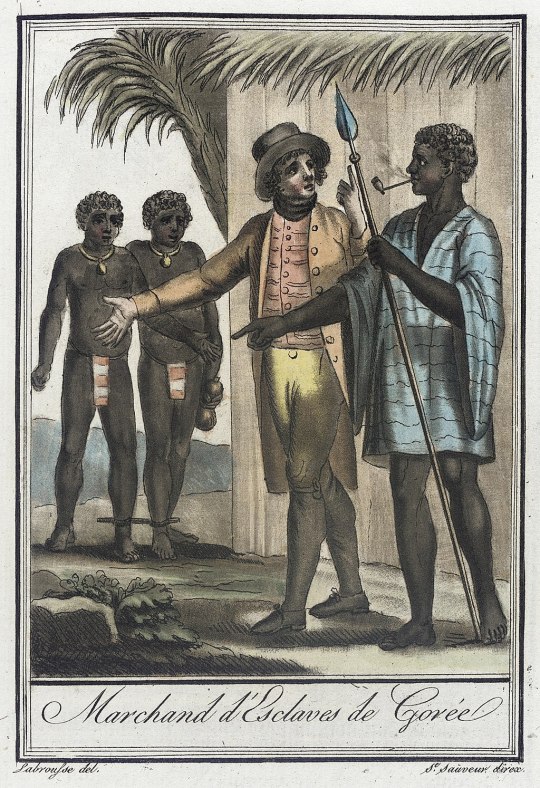
A slave trader of Gorée, engraving of c. 1797, by Jacques Grasset de Saint-Sauveur, via Wikimedia, but in public domain
Gorée is infamous for being the House of Slaves, which was built between 1780 and 1784 by an Afro-French family, the Métis. It has been described as having "one of the slave warehouses through which Africans passed on their way to the Americas," symbolic no matter how many Africans passed through, especially when it comes to its "door of no return." In the case of Senegambia (present-day Senegal, The Gambia, and Guinea-Bissau, portions of Mauritania, Mali, and Guinea), in 1794, it was partitioned between the French and British. This journey may also be the one the Philadelphia Inquirer referred to in September 1794 when it talked about a Captain Samuel Packard traveling from Barbados, which was then part of the British West Indies. [8] As for Cyprian, he was one of the biggest slave traders in Providence, he "financed at least 18 voyages that transported more than 1,500 enslaved persons to the southern United States and the Caribbean during the 1790s."
Later that year, on November 28, 1794, the GeneralGreene departed once more from Rhode Island, this time with John Stanton as the captain. [9] It would go on a 196 day voyage. The ship reached Iles de Los sometime in 1795, with 99 souls forced aboard. When it reached Savannah, Georgia in May of that year, only 88 remained, meaning 11% had died when trafficked across the Atlantic. The General Greene returned back to Rhode Island sometime after June of the same year. Iles de Los is a set of Islands off Conakry, Guinea. At the time, there was a trading post employing workers who repaired ships, and pilots for rivers, on the island. It would be controlled by the British beginning in 1818 and ending in 1904, later to be part of French Guinea from 1904 to 1958. Those on the islands were the Baga people and spoke the Baga language, specifically a Kaloum or Kalum dialect. That same year as the General Greene left the state, the African Union Society of African descendants in Rhode Island was organized in Providence to serve the needs of Black people in the state itself. [10] In Georgia, slavers from Rhode Island, especially in the early 1790s, dominated the slave trade to the state. Samuel and Cyprian were integral to this trade, with the latter described as the "wealthiest ship owner and most active slave trader" in the state. Again, the names of those on the ship were not listed, so we only know the number of those on the ship.
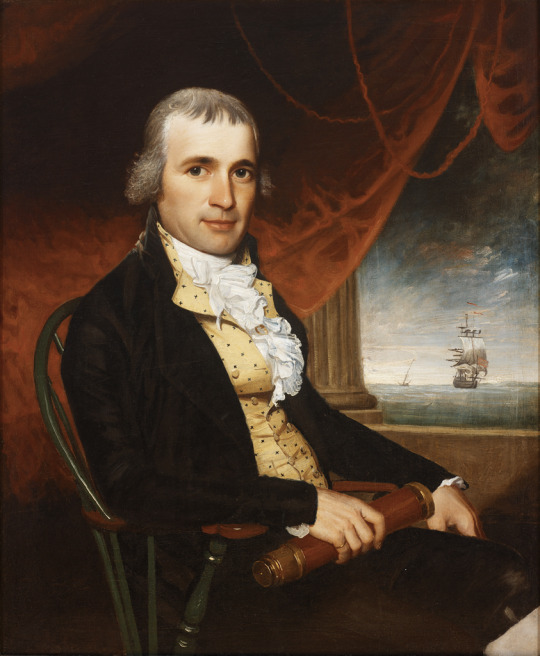
Sometime in 1795, James Earl, a Massachusetts-born artist, released his unsigned 35 x 29 oil painting, on canvas, of Samuel, then 45 years old. RISD described this painting as signaling his "social and professional role in the new republic," as he sits in a Windsor Chair, noting his waistcoat indicates he is "a man of wealth," with the background referring to his "interests in maritime trade." The museum also calls him a "merchant and talented mariner," who owned 39 vessels that sailed from Providence itself. Of course, his role in the slave trade is never mentioned. This is not a surprise, as the 1942 profile of Samuel in the Rhode Island History notes the same. [11] Furthermore, the absence of the slave trade from Earl's painting is not unique. As Edna Gabler points out, Black people in paintings by Charles Wilson Peale, John Trumbull, and others, "occupy subordinate positions, are rarely identified by name, and are most often used as props, background accessories, or foils," or, in this case, not mentioned at all.
The following year, on October 24, 1795, the Ann, a ship registered in Providence, and owned by Samuel and Cyprian, departed from Rhode Island. [12] Unlike the other journeys, Samuel was the captain. The ship would land somewhere on the African continent, with 133 people forced aboard. 70% of these African captives were men, about 26% were boys, and around 4% were women. Almost 26% of those aboard were children. 13 of these souls, 10% to be exact, would die during the Middle Passage. When the ship arrived at Spanish-controlled city of Havana, in Cuba, sometime in August 1796, only 120 remained, and all those in bondage disembarked there, with Samuel and the ship returning to Rhode Island. At the time, Havana was one of "the largest slave markets in the world," with over 600,000 Africans taken from West Africa and shipped to Cuba over three centuries. The Ann would later be sold in Havana, seemingly in September 1796. [13] Like with the other ships noted in this article, those in bondage aboard the Ann are not named, a clear form of dehumanization.

An enslaved Afro-Cuban in the 19th century, via Wikimedia Commons
At the time, landowners were beginning to win concessions that would change how land would be owned in Cuba, a process that would continue until 1820. [14] Values of land were rising and Cuban planters were consolidating their power on the island, importing machines from other European colonies, like those in the British West Indies, to strengthen the sugar industry. When Samuel landed in Cuba, he would have seen the beginning of changes in Cuban society, with population numbers beginning to rise, as did profits and agricultural production, with new position for the class of Cuban Creoles. The number of enslaved Black people on the island increased as demand for more workers continued to grow, especially after the import of White workers wasn't successful. An average of 1,143 enslaved Black folks in chains were brought into Cuba each year, between 1763 and 1789. The plantations in the British West Indies, including Barbados, the Leeward Islands, Jamaica, Ceded Islands, Trinidad, and British Guiana, were very profitable, with the average rate of profit being 6.1% between 1792 and 1798, based on the plantations studied. [15] Even so, the end of a sugar boom in the 1790s led politicians and planters to demand that the slave trade be ended once and for all.
On January 9, 1796, the James, a schooner registered in Providence, owned by Samuel and Cyprien, with Albert Fuller as the captain, departed from Rhode Island. [16] It went on a 216-day voyage. Once in Africa, 119 souls were forced aboard the ship in bondage. By the time it arrived in Savannah, Georgia, in mid-August 1796, only 98 enslaved Black people were remaining. As a result, 17.5%, or 21 people, had died along the way. The ship returned to Rhode Island by late October 1796. The ship later had Nathan Sterry as its captain when registered in January 1797, with Samuel as its owner. Sterry would also be the captain of a ship, the Mary, upon which three enslaved Black people attempted a mutiny to escape their conditions by taking control of the ship, even though this was, unfortunately, not successful. In this last illegal slave trading expedition which Samuel was involved in, those in chains, aboard the James, were again only listed as a number, but no names were provided.
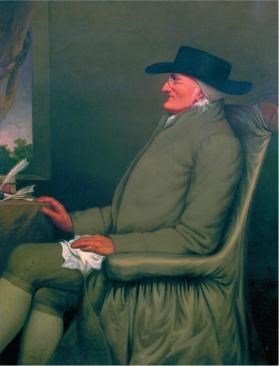
Painting of Moses Brown via NPS
On March 11, 1797, the Providence Abolition Society petitioned then-Attorney General Charles Lee, charging that the Ann, a ship of Cyprian and Samuel, had sailed under Samuel's command to travel to the African coast for enslaved people, even though this violated Rhode Island law. [17] A law had been passed in 1774 which made it illegal for citizens of the state to bring enslaved people into the state unless they had a bond to "bring them out again within one year" and those people brought to the state in defiance of the law would be "set free." However, the law caused slavers to sell captives in other ports while bringing their capital back to Rhode Island with them. The later was followed in later years, in 1787, by a measure which "banned participation by Rhode Islanders in the African slave trade." [18]
Some argued that the state's involvement in the slave trade was "part of a scramble by merchants to find something to trade and to market"with those involved earning a sizable profit. Following the enactment of the law in Rhode Island, similar laws passed in Connecticut and Massachusetts after being pressured by Quaker merchant merchant Moses Brown and Samuel Hopkins, a minister. The critical factor, according to I. Eliot Wentworth of University of Massachusetts Amherst's Special Collections & University Archives, of these laws was enforcing them, and when that did not happen, it lead to the creation of the Providence Society for Abolishing the Slave Trade. [19] It was mostly comprised of Quakers and had a membership of about 180 members. The society would face resistance from those invested in the trade, but still "played a valued role in supporting individuals of African descent in defending their rights in court." It won a judgement against Caleb Gardner, a merchant, in 1791, for "carrying out a slaving voyage in his brigantine Hope."
Cyprian, who owned half of the ships involved in the illegal slave trade, left it behind in order to avoid a crippling fine, signing a pledge to leave the slave trade forever, as did Samuel, from what I have read. [20] These efforts, like those of the Providence Abolition Society, were important since legislation against slave-trading in Rhode Island was hard to enforce, as noted earlier. For instance, a merchant and influential slaveowner named John Brown, a person who was instrumental in founding Brown University, tried in 1796 for violating the Slave Trade Act of 1794, prohibiting ships in American ports from bringing in enslaved people from any foreign country. At first he was convicted and his ship, the Hope, was confiscated for violation of federal law. However, as the case went through the legal system, he was ultimately acquitted, in a jury trial, "emerging with an acquittal and a judgment for costs against the Providence Abolition Society." [21] He even cited the arrangement the society made with Cyprian as part of a plea to stop prosecution against him.
As it turned out, the judge who presided over the case (Benjamin Bourn) and the federal prosecutor (Ray Greene) were allies of Brown, and the trial itself had a "devastating effect on the Providence Abolition Society, which went into a rapid decline." This was because, while by 1793, the Providence Society's activity had shifted to pushing for federal legislation, it remained dormant from February 1793 to November 1821. The Society was revived by David Howell and its name changed to the Providence Society for Promoting the Abolition of Slavery, continuing to meet until 1827. John later beat another prosecution in 1798, and in 1799, Samuel Bosworth, Surveyor of the Port of Bristol, was kidnapped by eight men dressed by Indigenous people, intimidating officials and putting a "halt to local enforcement of the Slave Trade Act" within Rhode Island.
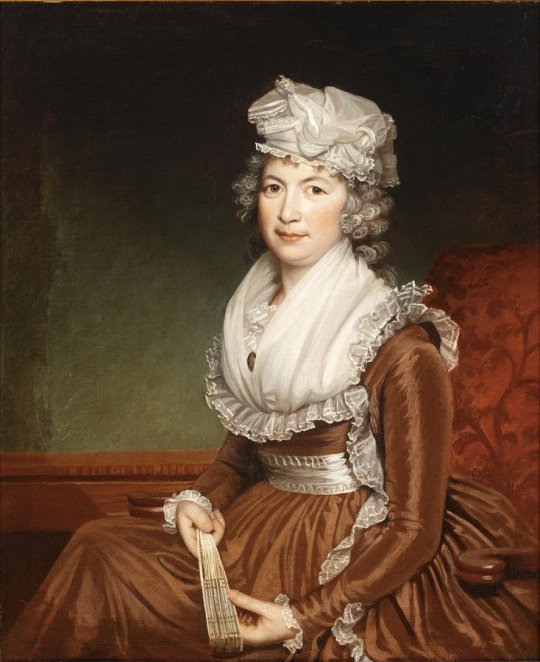
Via RISD, also painted by James Earl, and in the public domain
Samuel went onto become a wealthy shipowner and merchant who lived in a three-story-high lavish mansion in Providence with his wife Abigail Congdon. [22] He had married Abigail on December 13, 1789 at Saint Paul's Church in Rhode Island, with a Reverend William Smith as the minister. In 1798, Abigail inherited a portion of the Congdon homestead farm on Boston Neck. Samuel and Abigail had a number a children in later years, clearly living in Providence in 1800, just as he had in 1790. Their children included Abigail in 1802, Samuel in 1804, and Susan in 1806. By 1804, Samuel would work for the Providence Insurance Company, which ensured products like sugar, lived at Westminster Street in Providence (a property he bought in 1797). [23]
The Providence Insurance Company was founded on the initiative "of the Browns," including John, the arrogant slaver, in 1799. Other prominent shopping merchants, like Thomas Poynton Ives, John Innes Clarke, and Moses Lippitt, were on its board of directors. Samuel would be a member of the Providence Marine Society (PMS) and part of the Providence Marine Corps of Artillery after March 1803. [26] The latter group, founded in 1801 by PMS members, was a "private mutual aid society for sea captains," and while it later became part of the Rhode Island militia, the group itself "never served in active combat." The PMS, on the other hand, was a "mutual aid society for sea captains" founded in 1798.
Samuel also, reportedly, remembered George Washington fondly. This was not a surprise. In 1788, Olney Winsor, son of Samuel Windsor, a pastor of the Baptist Church of Providence, traveled to Alexandria on a sloop of which Samuel was the captain: the Susan. Both landed in Alexandria, went to a plantation at Col. Mason's Neck, seeing the control of slavemasters over those they enslaved firsthand, and met with George Washington himself.
By 1798, Cyprian was still living in Providence, owning a house, with a tenant: Brown & Ives, said to be a leader "in American commerce and industry for many years," and part of the Brown family which financed Brown University. [24] The company had been formed in a partnership between Nicholas Brown and Thomas Poynton Ives in 1791. The same year, Samuel is reported as having to have a summer house, house and barn, and perhaps another barn elsewhere in the city.
This wealth would not be possible without his involvement in the illegal slave trade which trafficked human beings from Africa back to the Americas in bondage. Let us be clear. Samuel, like Cyprian, might be called a human trafficker in today's language, if what he did happened today, although the comparison of present-day human trafficking and the transatlantic slave trade is not exact due to the differences between these oppressive systems of exploitation. [25] When they were alive, however, Samuel and Cyprian would likely be called slavers or slave traders. We don't know if Abigail had any role or say in Samuel's involvement in the trade, as we have no written records from her that I am aware of at this time. Even so, she still benefited from it, as she lived a life of luxury with Samuel until his death in 1820.
Samuel would also reportedly own land in Cranston, Rhode Island and in Illinois, along with a home in North Kingston, while building a house on the land his wife inherited on the death of her father, John Congdon. [27] Items from his houses are currently in RISD. John's grandfather, Benjamin, was reputed to be a huge slaveowner, while John, who had ten children with his wife, Abigail Rose. He received a tract of land of unknown acreage in Boston Neck, on his father's death, and then in October 1, 1803, Thomas R. Congdon sold one hundred and fifty acres of the farm to Samuel Packard, later known as the "Packard Farm," later reaching 500 acres. John's father, according to a 1765 listing, had seven enslaved people, one man (Coff), two young boys (Roshad and Tom), one woman (Tent), and three others (Cato, Fortune, and Jimie), working for him, which he manumitted at the time. [28]
In 1811, Samuel was aboard a ship when it French privateers raided the vessel, and how he tried to take back the ship, but was captured. [29] He would be at sea for eight days, then in a French prison for another eight days. They remained in France for another three months until they were allowed to go home. 17 years earlier, on February 4, 1794, France had abolished slavery, declaring that "all men irrespective of color living in the colonies are French citizens" but it was not reinforced, and Napoleon re-instituted it on July 16, 1802. He still remained in Providence, as he had in years prior, specifically in the city's West District. [30]
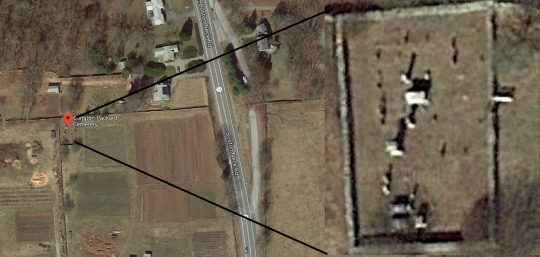
Screenshot of the cemetery where Samuel and Abigail are buried with a close-up of the cemetery taken from Google Earth
He died in July 1820, [31] while Abigail died in May 1854. Before her death, she established the Providence Female Charitable Society, which aided "indigent women and children." Both Samuel and Abigail are buried at Historic New England’s Casey Farm. While no wills or probates are available from them, both were of a higher class than others in Rhode Island and more broadly in New England. For Samuel, land ownership remained an important marker of civic identity and a measure of independence, as it was for other Americans, as historian Nancy Isenberg points out. This was based on the idea that people were not free unless they had "the economic wherewithal" to control their destiny, which comes from land ownership, deriving from an old English idea that the "quality of the soil determines the quality of the people."
Coming back to Samuel, his wealth derived, in part, as noted earlier, from trafficking enslaved Black people who were taken from their homelands by force. What he did was illegal, since the passage of a Rhode Island law in 1787 prohibiting it, and the Slave Trade Act of 1794, the latter with possible seizure of ships and a $2,000 fine, a law amended many times over the years until the Act Prohibiting Importation of Slaves passed in 1807. Even so, he still engaged in the trade despite the illegality, meaning, if he had been charged for his crimes, and convicted, he would have paid a total of $2,400, in, let's say, 1797. [32] This would likely have been a drop in the bucket for him. If assessed today, he would be paying $47,900.00, in terms of real price/real wealth, one of the most accurate measures, tied to CPI, according to Measuring Worth. In any case, what Samuel did went against "justice, integrity, and uprightness among people," in the words of the Quakers, who petitioned the Rhode Island legislature to abolish the slave trade in June 1787, participating in what they called an "unrighteous and inhuman trade to Africa for Slaves," complete with "cruel bondage."
Hopefully this article is a step in reworking and reframing narratives, as Adrienne Fikes pointed in June of this year. It is part of, what she talks about, in understanding who you are, who are in relation to others, who you come from, who your ancestors are, while looking at harm of past and its impact today. She also points out the value of sharing what you find with descendants of future generations, as does Donya Williams and Brian Sheffey of Genealogy Adventures (those who interviewed Fikes), noting the importance of think of microaggressions and pain involved in Black genealogy. Fikes also argues, rightly, that understanding structural racism, and noting the evolution of slavery, not seeing it in past tense. Furthermore, she says recognizing the humanity of people is important as is the current reality of dignity and humanity stolen from Black people, as is generational wealth. With this all being said, I look forward to hearing from you all as I continue to research my enslaved ancestors, as part of actively doing something to dismantle a system which privileges White people, uncovering more stories of my ancestors, even if it is difficult and disturbing at times to confront. [33]
Note: This was originally posted on Aug. 25, 2021 on the main Packed with Packards WordPress blog (it can also be found on the Wayback Machine here). My research is still ongoing, so some conclusions in this piece may change in the future.
© 2021-2022 Burkely Hermann. All rights reserved.
#slavery#packards#genealogy#family history#genealogy research#lineage#ancestry#slave trade#black history matters#black lives matter#rhode island#gambia#suriname#slave ships#18th century#19th century#public domain#senegambia#savannah#goree#havana#cuba#middle passage#cyprian sterry#black women#plantations#moses brown#abolitionists#james earl#george washington
2 notes
·
View notes
Text
Barton Lucas: well-off Cadet, Ensign, and Captain

Battlefields of the Seven Years War, courtesy of this website.
Reposted from Academia.edu and my History Hermann WordPress post. I originally wrote this biography when I was working at the Maryland State Archives for the Finding the Maryland 400 project.
Barton Lucas, a captain of the Third Company of the First Maryland Regiment, was born, according to some sources, in 1730, in Prince George's County. His father was Thomas Lucas and mother Anne Keene. Barton had four siblings named Basil, Margaret, Thomas, and Sarah. [1]
Lucas served in the Seven Years' War (1754-1763) which had Britain, France and indigenous people as combatants, resulting in transfer of northern parts of America and Canada from France to Britain. [2] In 1758, he signed on as a cadet, a military officer in waiting, in Joshua Bell's Company and he soon was a ensign in Captain Alexander Beall's Maryland Company, for which he received modest pay. [3] Maryland troops fought at the battle of Fort Duquesne in September of that year, joined by South Carolinian troops, to fend off indigenous attacks, but the English were defeated and Marylanders covered their retreat. [4] During these military engagements, Lucas was injured. [5]
In 1762, Lucas married Priscilla Sprigg, whose last name changed to Lucas after their marriage. His "beloved wife" Priscilla, "Prisey," was born in 1735 to Osborn Sprigg, a Maryland legislator, and Rachel Belt, and was one of five siblings. [6] In 1756, Lucas's father died, willing 112 acres and his plantation to Lucas. [7] In the 1750s and 1760s, Barton bought and sold enslaved blacks for his plantation. [8]
During the Revolutionary War, Lucas, a prominent community figure and combat veteran, served in the military. He was recommended as a field officer to a Battalion "on the upper part of the Patuxent" in 1775, however, he likely never served in this capacity since he was chosen in January of the next year as a Captain of the Third Company of Col. William Smallwood's Maryland Battalion. [9] In the summer of 1776, this Maryland regiment marched to New York and was put under the command of Gen. George Washington.
At the Battle of Brooklyn, the First Maryland Regiment, especially companies led by Lucas, Daniel Bowie, Peter Adams, Benjamin Ford, and Edward Veazey, later called the Maryland 400, held off the British while the rest of the Continental Army escaped Long Island to safety. While Lucas's company played a key role in the Battle of Brooklyn, on August 27, 1776 with sixty percent of his company killed, Lucas was ill and could not participate in the battle itself. [10] John Hughes, a private in his company, said years later that "Capt. Barton Lucas became deranged in consequence of losing his company." Still listed as ill, after the battle, Lucas was returned home and later resigned on October 11, 1776. However, Lucas rejoined the military as a colonel in the Prince George's County Militia from 1777-1778. [11]
After his military service, Lucas settled down to his plantation in Prince George's County. Existing records show that enslaved blacks, plantation tools, and farm animals were part of his overall property. [12] At his death, sometime between April 8, 1784 and May 16, 1785, in Prince George's County, he was still called a colonel and much of his property value consisted of enslaved blacks. [13]
- Burkely Hermann, Maryland Society of the Sons of American Revolution Research Fellow, 2016.
© 2016-2023 Burkely Hermann. All rights reserved.
Notes
[1] Will of Thomas Lucas, 1765, Prerogative Court, Wills, Liber BT2, p. 114, MdHR 1308-1. [MSA S538-44, 1/11/01/038].
[2] John Frost, Pictorial Life of General Washington: Embracing a Complete History of the Seven Years War, the Revolutionary War, The Formation of the Federal Constitution, and the Administration of Washington (Philadelphia: Lery, Getz & Co., 1860), 52, 65, 106.
[3] Letter to George Washington from Captain Nathaniel Ewing, 9 March 1779. Founders Online. National Archives; Orderly Book, 10 November 1758. Founders Online. National Archives; Letter to George Washington from Robert Stewart, 25 February 1762. Founders Online. National Archives; Archives of Maryland, vol. 61, pp. 392; Archives of Maryland vol. 59, pp. 54, 159, 170, 173, 196-7, and 251; "French and Indian War: Roster of Maryland Troops, 1757-1759 [Calvert Papers]." Maryland Historical Magazine 5, no. 3 (1910): 281; Maryland State Papers (Scharf Collection). 1759-1801. Certification of military service on the frontier [2/19/1767]. S1005 [MSA S1005-57-2, 1/8/5/44].
[4] Joshua Dorsey Warfield, The founders of Anne Arundel and Howard Counties, Maryland: A genealogical and biographical review from wills, deeds and church records (Baltimore: Kohn & Pollack, 1905), 213; "French and Indian War: Roster of Maryland Troops, 1757-1759 [Calvert Papers]," Maryland Historical Magazine 5, no.3, (1910): 272; Mary K. Meyer, "Genealogica Marylandia: MARYLAND MUSTER ROLLS 1757-1758." Maryland Historical Magazine 70, no. 2 (1975): 225; Mary K. Meyer, "Genealogica Marylandia: MARYLAND MUSTER ROLLS 1757-1758." Maryland Historical Magazine 70, no. 1 (1975): 107.
[5] Archives of Maryland vol. 61, page 392.
[6] Effie G. Bowie, Across the Years in Prince George's County: Genealogical and Biographical History of Some Prince George's County, Maryland and Allied Families (Richmond: Garrett and Massie, Inc., 1947), 595; "Sprigg Family," Maryland Historical Magazine. 8 (1913): 80; Edward C. Papenfuse, Alan F. Day, David W. Jordan, and Gregory A. Stiverson. "Sprigg, Osborn." A Biographical Dictionary of the Maryland Legislature, 1635-1789. Vol. 2: I-Z (Baltimore: John Hopkins University Press, 1985), 763; Special Collections, Legislative History Project Collection, Osborn Sprigg (ca. 1741-1815) [MSA SC 1138-001-1160/1177, 2/11/12/72]; Prince George's County Court, Land Records, 1765, Liber TT, p. 0338-9 [MSA CE65-19, accessed via MDLANDREC.NET].
[7] Will of Thomas Lucas, 1765, Prerogative Court, Wills, Liber BT2, pp. 114, MdHR 1308-1. [MSA S538-44, 1/11/01/038].
[8] Will of Thomas Lucas, 1765, Prerogative Court, Wills, Liber BT2, pp. 114, MdHR 1308-1. [MSA S538-44, 1/11/01/038]; Prince George's County Court, Land Records, 1765, Liber TT, p. 0338-9 [MSA CE65-19, accessed via MDLANDREC.NET]; Prince George's County Court, Land Records, 1759, Liber PP, p. 0093, 0144, 0321-2 [MSA CE65-17, accessed via MDLANDREC.NET]; Prince George's County Court, Land Records, 1772, Liber BB 3, p. 0068, 0085 [MSA CE65-22, accessed via MDLANDREC.NET]; Prince George's County Court, Land Records, 1775, Liber CC 2, p. 0135 [MSA CE65-23, accessed via MDLANDREC.NET].
[9] "Muster Rolls and Other Records of Service of Maryland Troops in the American Revolution," Archives of Maryland vol. 18, pp. 9; Archives of Maryland vol. 78, pp. 67 and 93; Archives of Maryland vol. 12, pp. 16; Archives of Maryland vol. 11, 92, 169, and 406.
[10] Fragments of letter of an Unknown Patriot Soldier (September 1, 1776), The Sprit of 'Seventy-Six: The Story of the American Revolution as Told by Participants (ed. Henry Steele Commager and Richard B. Morris. New York: Harper and Row, 1967), 440 [0/60/3/35]. Fully reprinted in Henry Onderdonk, Revolutionary Incidents of Suffolk and Kings Counties (New York: Levitt & Company, 1849), 147-8.
[11] "Muster Rolls and Other Records of Service of Maryland Troops in the American Revolution." Archives of Maryland vol. 18, pp. 333; Archives of Maryland vol. 16, pp. 532.
[12] Prince George's County Commissioners of the Tax, Assessment Record, Rock Creek Hundred, personal property, MdHR 40220-24 [MSA C1162-10, 1/21/10/011]; Will of Barton Lucas, Prince George's County, Register of Wills, Administration Bonds, October 1785, MdHR 9791 [MSA C1146-4, 1/25/08/003].
[13] At her death in October 1785, Priscilla's will listed one enslaved black woman and named her next of kin. Will of Priscilla Lucas, Prince George's County Register of Wills, Administration Bonds, October 1785, MdHR 9791 [MSA C1146-4, 1/25/08/003]; Inventories of Precilla Lucas and Col. Barton Lucas, Prince George's County Register of Wills, Inventories, Liber ST, pp. 337-40, MdHR 9799 [MSA C1228-9, 1/25/09/001]; Prince George's County Register of Wills, Administration Accounts, 1791, Liber ST 1, p. 376, MdHR 9805 [MSA C1144-4, 1/25/10/015]; Prince George's County Register of Wills, Administration Accounts, Liber ST 2, p. 6, MdHR 18865 [MSA C1144-6, 1/25/10/017]; Will of Barton Lucas, 1784, Prince George's County Register of Wills, Wills, Liber T1, p. 216, MdHR 9725-1 [MSA C1326-3, 1/25/07/004].
#us history#maps#revolutionary war#wills#black people#1780s#american revolution#probate#early american
0 notes
Photo
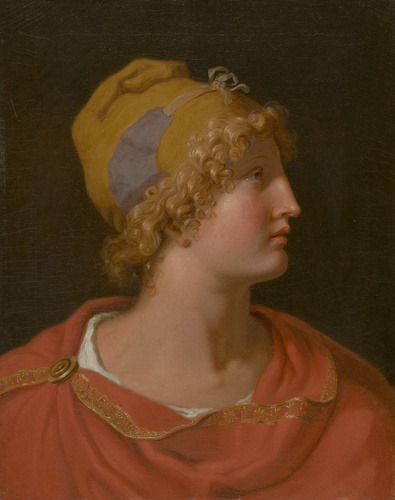
Paris, Wilhelm Tischbein, 1785, Art Institute of Chicago: European Painting and Sculpture
The Old Masters Society and restricted gifts of Roger and Sheryl Griffin, Laurie and James Bay, April Schink through the Old Masters Society
Size: 63 × 49.7 cm (24 13/16 × 19 9/16 in.)
Medium: Oil on canvas
https://www.artic.edu/artworks/227532/
74 notes
·
View notes
Photo
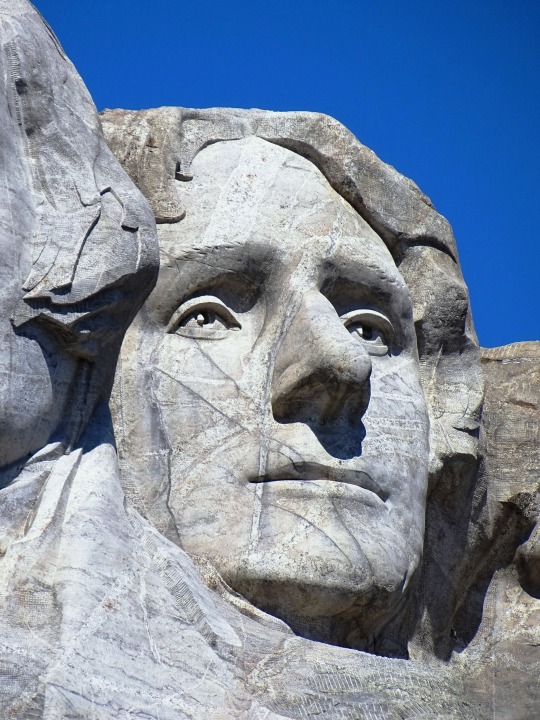
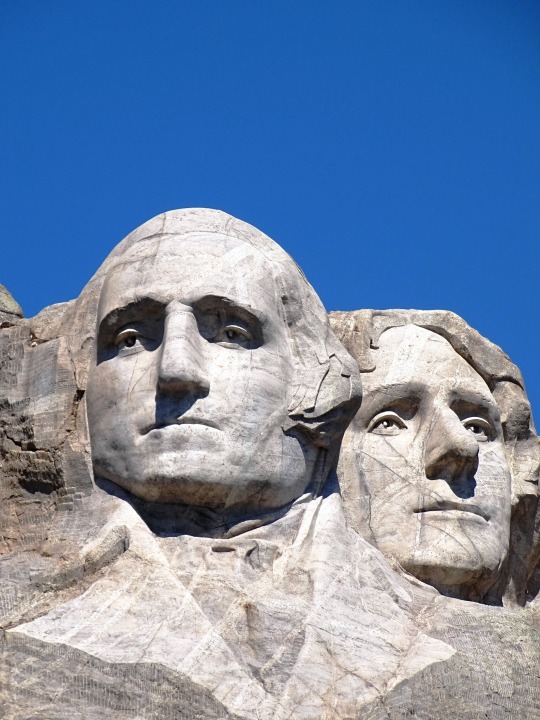
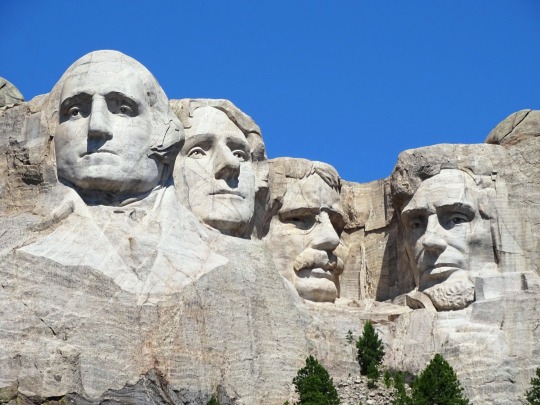

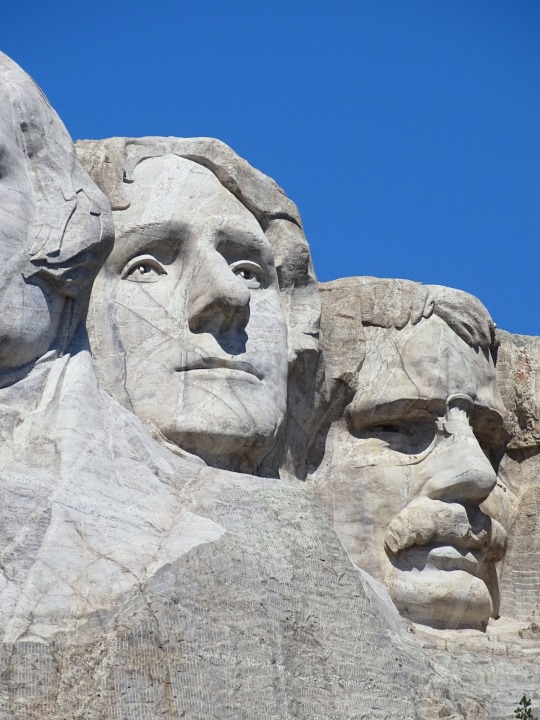

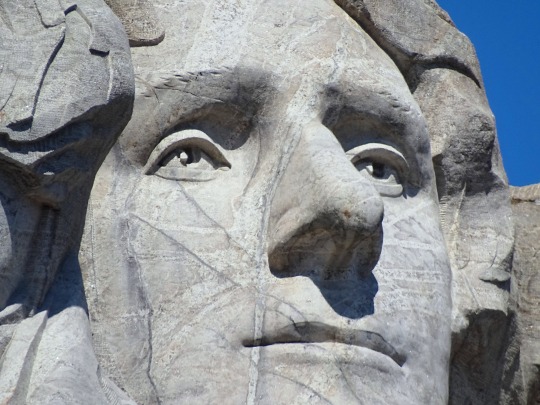
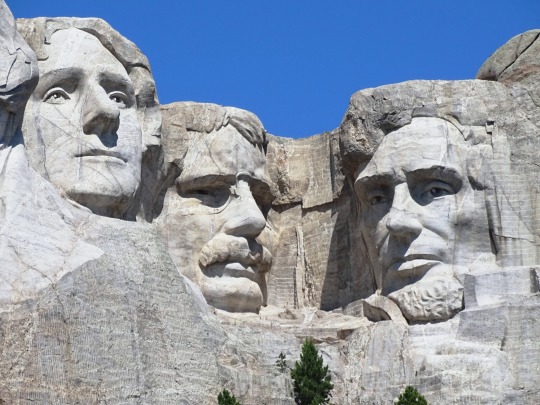
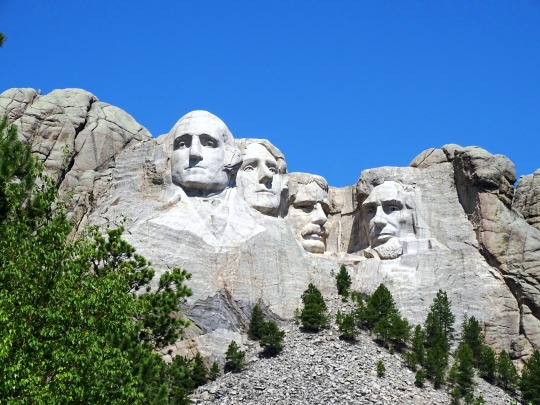

Thomas Jefferson Day
Thomas Jefferson, a founding father of the United States, was born on April 13, 1743. He held many roles and did much during the formative years of the country, including being the main author of the Declaration of Independence and the country’s third president. He wrote his own epitaph, highlighting what he most wanted to be remembered for: “HERE WAS BURIED THOMAS JEFFERSON AUTHOR OF THE DECLARATION OF AMERICAN INDEPENDENCE OF THE STATUTE OF VIRGINIA FOR RELIGIOUS FREEDOM AND FATHER OF THE UNIVERSITY OF VIRGINIA.”
Thomas Jefferson Day is a legal observance, but it is not a public holiday. A joint resolution approved on August 16, 1937, authorized the President of the United States to proclaim April 13 as “Thomas Jefferson’s Birthday” each year. The following year, President Franklin D. Roosevelt issued Presidential Proclamation 2276 to designate the day. Subsequent presidents have made similar proclamations. In Alabama, Thomas Jefferson’s birthday is officially celebrated on Presidents’ Day, along with George Washington’s.
Thomas Jefferson was born at the Shadwell plantation in Albemarle County, Virginia. His mother, Jane Randolph Jefferson, was from a prominent Virginia family, and his father, Peter Jefferson, was a planter and surveyor. After graduating from the College of William and Mary in 1762, he began studying law. As there weren’t official law schools at the time, Jefferson studied under a Virginia attorney. He began his work as a lawyer in 1767.
He married Martha Wayles Skelton on January 1, 1772. They had six children, but only two daughters lived to adulthood. Martha died in 1782 at the age of 33, and Jefferson never remarried. Besides keeping himself busy with politics throughout his life, he had many other interests, including gardening, architecture, music, and reading.
Jefferson was a member of colonial Virginia’s House of Burgesses between 1769 and 1775. He wrote “A Summary View of the Rights of British America” in 1774, which brought him to a wider audience. It said that the British Parliament didn’t have the right to use authority over the colonies. He was then selected to be a delegate to the Second Continental Congress. During this time, a panel of five was chosen to draft the Declaration of Independence. Of the five, which also included John Adams and Benjamin Franklin, Jefferson was chosen to write the draft. It was adopted on July 4, 1776.
In the fall of 1776, Jefferson resigned from the Continental Congress and was elected to the Virginia House of Delegates, which was formerly the House of Burgesses. In the late 1770s, he drafted the Virginia Statute for Religious Freedom. It was a notable forerunner to the First Amendment, and Jefferson thought it was one of his most substantial contributions, being important enough to include in his epitaph. After his time in the Virginia House of Delegates, he was Governor of Virginia from 1779 to 1781.
Following the Revolutionary War, Jefferson was part of Congress, which was known as the Congress of the Confederation at the time. He served from 1783 to 1784, and then became Minister to France in 1785, taking over the position that Benjamin Franklin had held. Because he was overseas, he was not able to attend the Constitutional Convention in 1787.
In the fall of 1789, Thomas Jefferson returned to America and became the first secretary of state. He helped found the Democratic-Republican Party, which opposed Alexander Hamilton’s Federalist Party, a party which wanted a strong central government with strong powers over the economy. Jefferson believed in a federal government with a limited role and believed in strong state and local governments.
He ran for president in 1796 and received the largest amount of votes after John Adams, so he became vice president. He ran against Adams again in 1800, and this time beat him. But his electoral vote count tied that of his running mate, Aaron Burr, and it was up to the House of Representatives to declare Jefferson as president. Because of this, the Twelfth Amendment, which stipulated separate voting for president and vice president, was ratified in 1804.
Jefferson served two terms as president and was in office from 1801 to 1809. During his first term, in 1803, he helped orchestrate the Louisiana Purchase, in which the size of the United States doubled with the purchase of land for $15 million from France. Jefferson sent Meriwether Lewis and William Clark on an expedition, known as the Corps of Discovery, to explore the new land. With this trip, information was gathered about geography, plant and animal life, and American Indian tribes. During his second term, which he secured with over 70% of the popular vote, Jefferson worked to keep the country out of the Napoleonic Wars. He implemented the Embargo of 1807 after merchant ships were getting harassed by France and Britain. It was an unpopular move, though, as it shut down American trade and hurt the economy; it was repealed in 1809. Jefferson did not run for a third term in 1808.
After his presidency, Jefferson retired to his home, Monticello. “Monticello” means “little mountain” in Italian. Indeed the home is located on a small mountain, on the edge of the Shadwell property where Jefferson was born. He had begun clearing the area for a home in 1768. He designed the home and gardens himself, and he continually worked on the house throughout his life. Art and gadgets filled the rooms, and he kept records of everything that went on at the plantation.
During his retirement years, he also helped found the University of Virginia. He helped design both its buildings and its curriculum. He also made sure it wasn’t a religious school and that there wasn’t a religious litmus test in order to attend it.
In 1815, he sold his 6,700 volume personal library to Congress, to replace the books that had been destroyed by the British in the War of 1812, when they burned the Capitol, which housed the Library of Congress at the time. Jefferson’s books became the foundation of what became the Library of Congress’s new library.
Although Jefferson is revered as one of the founding fathers, he is not a man without contradictions and shortcomings. He was a promoter of liberty and wrote “all men are created equal,” but was a slave owner throughout his whole life, during which he owned a total of about 600 slaves. He believed blacks were inferior humans and didn’t think coexistence would be possible if they were free. And although he never remarried after the loss of his beloved wife, Martha, he went on to father more children with one of his slaves, Sally Hemings. Some of the slaves that were in his bloodline were freed after his death, but most of his slaves were sold.
Thomas Jefferson passed away at Monticello at the age of 83, on July 4, 1826, on the 50th anniversary of the adoption of the Declaration of Independence. As if the date of his death wasn’t ironic enough, fellow founding father John Adams died on the same day. Thomas Jefferson died first, but Adams did not know that Jefferson had died, and his last words were “Thomas Jefferson survives.” Jefferson was buried at Monticello. Monticello was sold off following his death to pay debts, but a nonprofit organization acquired it in the twentieth century and it was opened to the public in 1954.
Source
#Thomas Jefferson Day#13 April 1743#280th anniversary#US history#born#birthday#Mount Rushmore National Memorial#controversial memorial#USA#controversy#Black Hills#South Dakota#Gutzon Borglum#summer 2019#original photography#tourist attraction#landmark#landscape#nature#NationalThomasJeffersonDay#Thomas Jefferson#US President#Teddy Roosevelt#Theodore Roosevelt#Abraham Lincoln#George Washington#North Central Region#Great Plains
0 notes
Photo



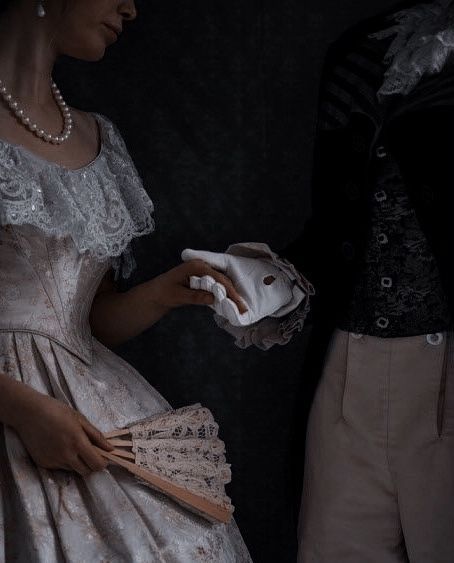

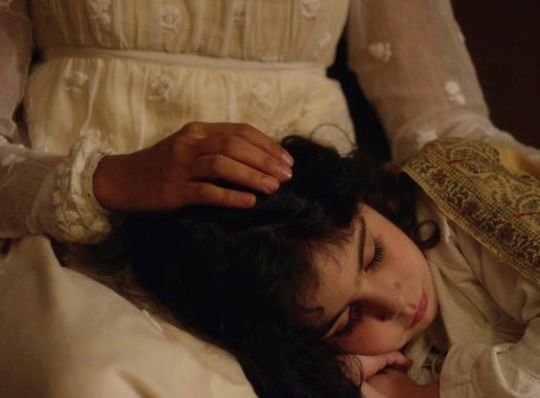
Full Name: Sarah Marlene Bridgerton (nee Bonavitch)
DOB: September 11th 1785
DOD: April 17th 1824 (39 years old)
Parents: Desmond and Roslyn Bonavitch
Siblings: Richard, Pattie, Ophelia, and Emerson
S/O: Anthony Bridgerton
Married: June 14th 1799 (14 years old)
Hometown: London, England
Nicknames: Sare
Title: Lady Bridgerton
Personality Traits: Kind, Humble, Patient, and Stubborn
Children:
Alistair Ambrose Bridgerton (16, 1801)
Blair Bartholomew Bridgerton (18, 1803)
Charlotte Colette Bridgerton (19, 1804)
Dominic Dean Bridgerton (21, 1806-1809)
Edmund Eugene Bridgerton (21, 1806)
Florence Faith Bridgerton (21, 1806)
Genevieve Giselle Bridgerton (23, 1808)
Henry Hugo Bridgerton (24, 1809)
Isabelle Iris Bridgerton (26, 1811)
James Joseph Bridgerton (27, 1812)
Konrad Killian Bridgerton (27, 1812)
Lorelei Louisa Bridgerton (29, 1814)
Miles Montgomery Bridgerton (31, 1816)
Nathaniel Nicholas Bridgerton (32, 1817)
Olive Odette Bridgerton (34, 1819-1819)
Phineas Peter Bridgerton (35, 1820)
Rosalie Ruth Bridgerton (37, 1822)
Samuel Sylvester Bridgerton (38, 1823)
Theodosia Sarah Bridgerton (39, 1824)
Appearance:
- Long Brown Hair
- Green Eyes
- Small Nose and Ears
- Very petite, almost fragile like
24 notes
·
View notes
Text
La Fayette - an American Citizen?
As promised, @msrandonstuff :-)
The question weather La Fayette was an American citizen had for quite a time been the subject of debates - both during La Fayette’s lifetime as well as long after his death. Not only La Fayette’s own status was up for debate but also the legal status of his descendants.
We start off with the fairly simple, La Fayette had been made an honorary American citizen on August 06, 2002 (that is the date where President George W. Bush signed the resolution, the bill however had been first introduced on April 24, 2001, you can find the timeline of the bill here.)
The Congress of the United States has a very detailed (and research-friendly) free online archive. You can read the wording of the original bill here and here you can see the amendments that were made. The speeches and procedures that accompany the bill the day it was passed in the House of Representatives are to be found here.
Here is the text of the resolution for everybody who has no interest or time to go through my jungle of links :-)
Joint Resolution
Conferring honorary citizenship of the United States posthumously on Marie Joseph Paul Yves Roche Gilbert du Motier, the Marquis de Lafayette.
Whereas the United States has conferred honorary citizenship on four other occasions in more than 200 years of its independence, and honorary citizenship is and should remain an extraordinary honor not lightly conferred nor frequently granted;
Whereas Marie Joseph Paul Yves Roche Gilbert du Motier, the Marquis de Lafayette or General Lafayette, voluntarily put forth his own money and risked his life for the freedom of Americans;
Whereas the Marquis de Lafayette, by an Act of Congress, was voted to the rank of Major General;
Whereas, during the Revolutionary War, General Lafayette was wounded at the Battle of Brandywine, demonstrating bravery that forever endeared him to the American soldiers;
Whereas the Marquis de Lafayette secured the help of France to aid the United States' colonists against Great Britain;
Whereas the Marquis de Lafayette was conferred the honor of honorary citizenship by the Commonwealth of Virginia and the State of Maryland;
Whereas the Marquis de Lafayette was the first foreign dignitary to address Congress, an honor which was accorded to him upon his return to the United States in 1824;
Whereas, upon his death, both the House of Representatives and the Senate draped their chambers in black as a demonstration of respect and gratitude for his contribution to the independence of the United States;
Whereas an American flag has flown over his grave in France since his death and has not been removed, even while France was occupied by Nazi Germany during World War II; and
Whereas the Marquis de Lafayette gave aid to the United States in her time of need and is forever a symbol of freedom: Now, therefore, be it
Resolved by the Senate and House of Representatives of the United States of America in Congress assembled, That Marie Joseph Paul Yves Roche Gilbert du Motier, the Marquis de Lafayette, is proclaimed posthumously to be an honorary citizen of the United States of America.
Now, this honorary citizenship does only involve La Fayette himself. His heirs have nothing to do with this act. It does however acknowledge that La Fayette had already been made a citizen by the state of Maryland and the Commonwealth of Virginia (they left out the, somewhat questionable, declarations by the State of Connecticut and the State of Massachusetts.) Let us therefor go back to the 18th century and have a look at both of these resolutions. First is Maryland:
The General Assembly of the state of Maryland passed the following resolution on December 28, 1784.
CHAP. XII.
An ACT to naturalize major-general the marquis de la Fayette and his heirs male for ever.
WHEREAS the general assembly of Maryland, anxious to perpetuate a name dear to the state, and to recognize the marquis de la Fayette for one of its citizens, who, at the age of nineteen, left his native country, and risked his life in the late revolution; who, on his joining the American army, after being appointed by congress to the rank of major-general, disinterestedly refused the usual rewards of command, and sought only to deserve what he attained, the character of patriot and soldier; who, when appointed to conduct an incursion into Canada, called forth by his prudence and extraordinary discretion the approbation of congress; who, at the head of an army in Virginia, baffled the manœuvres of a distinguished general, and excited the admiration of the oldest commanders; who early attracted the notice and obtained the friendship of the illustrious general Washington; and who laboured and succeeded in raising the honour and the name of the United States of America: Therefore,
II. Be it enacted, by the general assembly of Maryland, That the marquis de la Fayette, and his heirs male for ever, shall be, and they and each of them are hereby deemed, adjudged, and taken to be, natural born citizens of this state, and shall henceforth be entitled to all the immunities, rights and privileges, of natural born citizens thereof, they and every of them conforming to the constitution and laws of this state, in the enjoyment and exercise of such immunities, rights and privileges.
Interesting piece of legislature, we are now not only talking about La Fayette but also about “his male heirs forever” - keep that in mind for later. On to Virginia:
The Journal of the House of Delegates of the Commonwealth of Virginia, yr. 1781-1786 states for Thursday, December 16, 1784:
Ordered, That leave be given to bring in a bill “for the naturalisation of the Marquis De la Fayette;” and that Messr. Henry Lee, and Turberville, do prepare and bring in the same.
We can read for Monday, October 31, 1785:
Mr. Henry Lee presented, according to order, a bill, “for the naturalisation of the Marquis De la Fayette;” and the same was received and read a first time, and ordered to be read a second time.
We can further read on that day that:
A bill, "for the naturalization of the Marquis de la Fayette;" was read the second time, and ordered to be com- mitted to a committee of the whole House immediately. The House, accordingly, resolved itself into a committee of the whole House, on the said bill ; and after some time spent therein, Mr. Speaker resumed the chair, and Mr. Braxton reported, that the committee had, according to order, had the said bill under their consideration, and had gone through the same, and made several amendments thereto, which he read in his place, and afterwards delivered in at the clerk's table, where the same were again twice read, and agreed to by the House.
The next day, on Tuesday, November 1, 1785, we can read in the Journal:
An engrossed bill. “for the naturalization of the Marquis de la Fayette;" was read the third time.
Resolved, That the bill do pass; and that the title be, "an act, for the naturalization of the Marquis de la Fayette.'”
Ordered, That Mr. Henry Lee do carry the bill to the Senate, and desire their concurrence.
On Friday, November 11, 1785 we can read:
A message from the Senate by Mr. Harrison
Mr. Speaker, — The Senate have agreed to the bill (…) “for the naturalization of the Marquis de la Fayette;" (…) And then he withdrew
And finally on Saturday, January 7, 1786 we can read:
The Speaker signed the following enrolled bills: (…) “An act, for the naturalization of the Marquis de la Fayette."
At this point now we have two citizenships, one of them including his male heirs - so why was there any need for the honorary citizenship of 2002? I let Mr. Sensenbrenner, from the Committee on the Judiciary, who also submitted the amendments to the 2002 bill, explain it:
The Marquis de Lafayette was granted citizenship by the States of Maryland and Virginia before the Constitution was adopted. In 1935, a State Department letter addressed the question of whether the citizenship conferred by these States could be interpreted to have ultimately resulted in the Marquis de Lafayette being a United States citizen. Their determination was that it did not. The State Department provided an excerpt from the Journals of the Continental Congress in 1784 which stated in the Congress' farewell to the Marquis that ``as his uniform and unceasing attachment to this country has resembled that of a patriotic citizen of the United States . . . [emphasis added]'' as proof that the citizenship was not considered to have translated to a Federal level.
Simply speaking, a “state citizenship” does not equal a “real American citizenship”. Nevertheless, two decadents of La Fayette tried to obtain an American citizenship by using the Maryland resolution. Count René de Chambrun in 1932 and Count Edward Perrone di San Martino a few years later – I think the years was 1935 and he was the reason the State Department wrote their letter. As you all can very well imagine, both men were denied. Beside the rather obvious reason for their denial, the descendants were faced with even more legal obstacles. They had to rely solely on the Maryland resolution. That resolution was passed in 1784 under the Articles of Confederation. This set of laws was replaced on March 4, 1789 by the United States Constitution. Some people argue that La Fayette and all his male heirs born up until March 4, 1784 were made US citizens by the Maryland resolution but new citizenships could not be granted to any male heirs born after the Constitution became effective, because the Maryland resolution was passed under the Articles of Confederation and not under the Constitution. Some people argue however, that the Constitution still provides the same legal margin for a citizenships according to the Maryland resolution.
It furthermore has to be taken into consideration, that the term “and his heirs male forever” generally implies that there has to be an uninterrupted line of male decadents and heirs. From father to son to grand-son, great-grandson and so on and so forth. The problem is, that the male line of the La Fayette’s died out quite some time ago. La Fayette himself had one son, Georges Washington Louis Gilbert de La Fayette. He in turn had two sons of his own. Oscar Gilbert Lafayette and Edmond de La Fayette. None of them had any surviving male children of their own.
But these two incidents were not the only times that trouble and uncertainty arose from the States grant of citizenship - far from it. When La Fayette was arrested during the French Revolution by the Austrian troops, he tried to avoid imprisonment by declaring himself an American citizen. Neither the Austrians nor the Prussians bought into that and the Americans were also a bit uneasy about La Fayette’s claim. Later, when Adrienne send her son Georges Washington de La Fayette over to America, she wrote a very “subtle” letter, reminding the American people that her son was included in the resolution from Maryland. Meanwhile, James Monroe, the American ambassador to France at the time, had obtained passports for Adrienne and her two daughters to travel to America as well. The papers were for “Mrs. Motier of Hartford, Connecticut”. Here is the catch; the town of Hartford in Connecticut (not the state itself, only that single town) had declared La Fayette and his entire family as citizen. The passports were made on a very shaky legal ground and Monroe was fully aware of that - but he simple did not care, nor did anybody else. They wanted to help the family and if questionable passports were the way to go, so be it.
So there you have it. La Fayette was made a citizen of the United States only once, but he was made twice the citizen of different States.
#lafayette#marquis de lafayette#la fayette#general lafayette#historical lafayette#france#america#2002#1782#1785#1786#1824#1789#american revolution#american history#french history#history#house of representatives#united states senate#congress#george w bush#honorary citizenship#legal#articles of confederation#united states constitution#georges washington de lafayette#oscar gilbert de lafayette#edmond de la fayette#maryland#virginia
16 notes
·
View notes
Link
Hello and welcome to A Murderess Affair. My name is Gabrielle, and this seems to be the month that we’re talking about murderous healthcare workers.
Our story today takes us to Germany, where we talk about the deadly Gesche Gottfried.
Gottfried was born on March 6 1785 to Johann Timm and Gesche Margarethe Timme. She had a twin brother Johann Timm Jr, and her parents always preferred him to her. Now, like many other serial killers, people like to look back at Gottfried’s childhood to try and see how it affected her as an adult.
What’s interesting about Gottfried’s case in particular is that it seems like because of how she killed people, and just the general way her parents treated her, a lot of people have begun to believe that she had Munchausen syndrome by proxy.
Basically, Munchausen’s by proxy is where a caregiver makes up or causes an illness/injury to someone under their care.
Gottfried’s father was a tailor, and her mother worked as a sewer/seamstress. But, surprisingly enough, despite their supposedly low or poor class status, Gottfried and her parents arranged a marriage between herself and a wealthy man who made saddles in 1806, Johann Mittenberg.
And this marriage was not a happy one. Mittenberg seemed to like drinking, prostitutes, and dance halls more than he liked spending time with his wife.
And sadly, by 1813, this marriage would be over. Gottfried became known as the “angel of Bremen”, as this beautiful blue eyed blonde haired 28 year old who doted on her sick husband despite all of his failures, nurturing him quite literally to his death.
Gottfried was now a widow with 3 children, but she was also very, very good friends with one of her dead husband’s friends, Michael Christoph Gottfried.
Now, Gottfried’s parents were not too happy with this interest she took. Apparently, Michael wasn’t a big fan of kids, and her parents were very, very vocal about their disapproval. They were the only obstacle in Gottfried’s marriage to Michael. At least, until first Gottfried’s mother, 3 and 6 year old daughters, father, and 6 year old son died within the span of May, June, and September of 1815.
Childless, with no family to support her, the town’s sympathy was only growing. While this may look suspicious to us now, this was back in a time where epidemics routinely took the lives of many families who lived in unhygienic and crowded conditions.
Honestly I think now more than any other time is when we can understand how quickly sickness spreads through a community.
So no suspicions were raised, and now all barriers holding Gottfried back from marrying Michael were disposed of, and their relationship would continue.
Until 1816, when Gottfried’s twin brother returned from a war that left him injured and with destroyed faculties. He’d fought in the war against Napoleon, and now that he was discharged he wanted to claim the inheritance his parents had left him. And, since he was the favored child, he was left significantly more.
Gottfried couldn’t have that, and on Jun 1st, 1816, she cooked him a dinner of fish and arsenic. He died not too long after.
Arsenic used to be so easily found. It was commonly sold at drug and corner stores as a form of rat poison, and was nearly tasteless. Gottfried’s go to for incorporating her poison was to use “mouse butter”, which was a mix of fat and arsenic that created a butter like substance often used to kill rodents and other pests.
Now, not long after her brother’s death, Gottfried found out that she was pregnant. And with this revelation, her new lover Michael decided he was done with the relationship. Gottfried wasn’t having that, and began mixing this mouse butter into his meals. He didn’t die at first, but fell completely under her whims and was considered “invalid”. They were married so that she could continue to care for him, but ultimately he died in July 1817. The baby she was carrying would also turn out to be stillborn.
After Michael’s death, Gottfried hit a dry spell where nobody close to her died. It wasn’t until 1823, when her funds began to run out, that she started resorting to her old methods.
She was proposed to by her neighbor, a merchant named Paul Zimmerman, who proposed spring of that year.
It wasn’t long after that she made a trip to the pharmacy, where they were advertising their “mouse butter” on sale. To test it, and see if it was “the real thing”, she made a sandwich for her fiance, who began to get sick and continued to get worse until he died on June 1st, 1823. Luckily, he’d remembered to add her in his will before he died, so she ended up getting his assets.
After his death, it seems that Gottfried started actively looking for more and more victims.
When she ran out of funds, she ended up selling the house to a wheel maker, Johann Rumpff, under the condition that she was allowed to stay on as a tenant. She soon became close to the family as they moved in, helping take care of the house and being referred to by the children as their “aunt”, and caring for them when their parents were busy.
She even helped take care of Mrs. Rumpff, when she got sick, until she died on December 22nd, 1826. Yes, that “mouse butter” was coming in handy.
Except, Johann Rumpff was suspicious. This only increased when one day he found strange white grains in a salad that Gottfried had served him. He refused to eat the salad, and a few days later noticed the same white grains, and this time he saved some and later gave them to a doctor. This doctor confirmed it was a “considerable amount of arsenic”, and she was arrested on March 6th, 1828.
Unfortunately, at that point she had claimed the lives of 2 others, and also had dosed her latest victim, Friedrich Kleine, to the point that even though she was caught Kleine still died.
She was jailed for 3 years in a cellar under the town hall in Bremen. The judge, Franz Friedrich Droste, was reportedly fond of her and treated her with pity.
Gottfried was found guilty of the murders of 16 people, although her own estimate was somewhere around 30. She was given a death sentence, and on April 21st, 1831 she was sent to Domhof Square. There was a scaffold covered in black and she was directed to the podium and sat on a stool. There, she was beheaded, and her body displayed on museum in Domhof. The reason? To raise money for an orphanage.
Gottfried’s was the last public execution in Bremen, and her skeleton was last reported to be in the Department of Pathology of Bremen in 1912.
One way that Gottfried is remembered in Bremen is at the central city square. There, you will see a “black stone” in the roadway, where the platform that Gottfried was beheaded once stood.
To demonstrate their disgust towards Gottfried and her cruelty, the city placed this black stone and encourage those who see to spit on it. Nowadays, people do it even though they may not necessarily know the story behind it.
#true crime#tw murder#tw true crime#a murderess affair#history#women in history#history podcast#true crime podcast#serial killer#female serial killers
1 note
·
View note
Text
John Adams

John Adams was born to John Adams Sr. and Susanna Boylston on October 30, 1735. He was born in Braintree (now Quincy), Massachusetts Bay, British America. Adams had two (2) siblings: Peter Boylston Adams [1738-1823] and Elihu Adams [1741-1775].
Adams married Abigail Smith in 1764. They had six (6) children together. The first was Abigail (Nabby) Amelia Adams Smith [1765-1813]. The second was John Quincy Adams [1767-1848]. Third was Susanna Adams [1768-1770] and then was Charles Adams [1770-1800]. The fifth was Thomas Boylston Adams [1772-1832]. The last child was Elizabeth Adams [1777-1777].
John Adams died at 90 on July 04, 1826 in Quincy, Massachusetts. The cause of his death was likely due to heart failure. He was laid to rest at United First Parish Church, Quincy, Massachusetts.
John Adams held six (6) offices during his lifetime. The first office he held was as a Delegate to the Continental Congress from Massachusetts [September 05, 1774 - November 28, 1777]. The second as a United States Envoy to France [November 28, 1777 - March 08, 1779]. Then as the 1st United States Minister to the Netherlands [April 19, 1782 - March 30, 1788]. Next as the 1st United States Minister to the United Kingdom [April 01, 1785 - February 20, 1788]. The fifth office he held was as the 1st Vice President of the United States [April 21, 1789 - March 04, 1797]. The last office Adams held was as the 2nd President of the United States [March 04, 1797 - March 04, 1801].
John Adams was Pro-Administration [before 1795], a Federalist [1795- c.1808], and then a Democratic-Republican [c.1808-1826].
20 Interesting Facts About John Adams:
· John Adams died only hours after Thomas Jefferson.
· None of his family were present for his inauguration.
· Adams did not attend Thomas Jefferson's inauguration.
· Of the first five (5) American Presidents, John Adams was the only non-slaveholder.
· Of the first five (5) American Presidents, Adams was the only non-Virginian.
· While he was not a slaver, he was against abolition.
· John Adams last words, erroneous as they were, was "Thomas Jefferson survives".
· Adams spent a night sleeping in the same bed as Benjamin Franklin.
· The British wanted him hanged.
· He was the first person to propose the idea of a U.S. Military Academy in 1776.
· John Adams was the first President to live in the White House.
· Before becoming President, he observed the Sabbath.
· Adams was a hopeless romantic.
· He tried to save the home of one of his harshest critics.
· As President, Adams refused protection outside his house for over a year.
· Adams is one of only ten (10) Presidents to serve a single term.
· John Adams created America's oldest band.
· Adams founded one of America's top scientific societies.
· The finale official dinner that Adams gave as President was for a delegation of Native Americans on February 16, 1801.
· John Adams was a bad dancer.
#john adams#personal life#office#history#interesting facts#founding fathers#president#vice president
2 notes
·
View notes